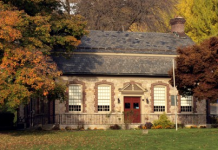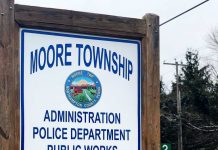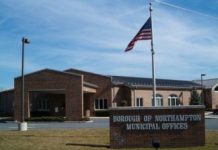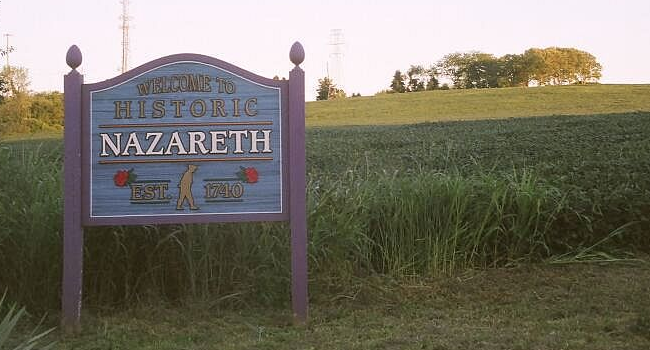As the eighth county formed in the Commonwealth of Pennsylvania, March 11 marked 272 years since Northampton County’s 1752 formation. Additionally, March also happens to be Women’s History Month, which highlights the contributions of women to events in history and contemporary society. In celebration of both, these are the stories of three remarkable Northampton County women from its earliest days.
Throughout the 17 and 1800s, most women lacked formal education and were forced into marriage through economic necessity as they relied on their husbands for their status and place in society. Regrettably, this also means that many of their stories have been largely excluded from history.
In 1725, Countess Henrietta Benigna Justine Zinzendorf was born in Saxony. Her father, Count Nicolaus Ludwig von Zinzendorf, became very involved with the “Unitas Fratrum” or Unity of Brethren that the Moravian Church originated from, which resulted in authorities exiling him from his land for 10 years.
At the time, Benigna was just 11 years old when her family was forced to travel in search of a place to call home. In December 1741, Benigna traveled with her father to America, settling at the new Moravian establishments in Pennsylvania in Germantown. On Christmas Eve that same year, her father bestowed the name of Bethlehem to the Moravian establishment.
Then, on May 4, 1742, 16-year-old Countess Benigna opened a girls’ school for 25 pupils which taught reading, writing, religion, and household arts such as needlepoint and cooking in Germantown. The school moved several times between Bethlehem and Nazareth before finally settling permanently in Bethlehem in 1749.
Bethlehem Female Seminary began as an elementary institution for young Moravian girls and is believed to have been the first boarding school for girls in the country. However, when the school ran out of funding in 1751, it closed until 1785 when it was reopened as Moravian Female Seminary. The school was then open to the public and welcomed students from anywhere in the world and of any faith. Additionally, the school became the first to educate Native Americans in their own language.
Moreover, Moravians were also ahead of their time in many other ways. For example, Moravians lived communally and believed that people should work together regardless of race, class or gender. Their necessities, such as food, shelter and clothing, were also provided so long as they did their part within the community. This allowed women to choose whether or not they wanted to marry and to whom, and afforded girls and women the same education as their male counterparts since Moravians believed that everyone should be provided an equal education.
Throughout the years and its many affiliated titles, the school also become a secondary educational institution for adolescent girls (present day Moravian Academy), a college for women that was granted the right to confer degrees in 1912 with the first full senior class of women graduating with Bachelor of Arts degrees in the major of their choice in 1915 and a coeducational college for both men and women as it merged with Moravian College and Theological Seminary for men in 1954, which became present day Moravian University. To think that Countess Benigna was merely 16 when she founded such an educationally progressive institution is truly astounding!
Another woman whose story is quite remarkable takes our journey back to 1780 when Pennsylvania was the first state to pass a bill for the “gradual abolition of slavery,” which stopped the importation of slaves into the commonwealth, required all slaves to be registered and established that all “negro or mulatto” children born in the commonwealth to enslaved mothers after the bill’s passage would be “servants to their masters” until they turned 28 years old, upon which they would be emancipated.
However, the act also provided provisions to appease slave owners so that slavery was not immediately made illegal. This permitted slaveholders to keep slaves they already owned for the duration of their lives.
Therefore, an enslaved woman named Phillis shows up on just three documents during that time. Phillis first shows up in a letter from Michael Hart, a prominent Easton merchant and slaveholder, registering Phillis as enslaved on Oct. 21, 1780. She also appears on the Register of Negroes or Slaves in the County of Northampton, listing 58 enslaved persons between the ages of two months and 75.
Phillis, who was just 18 years old at the time, is listed as Hart’s only slave on the register.
Then, in 1783, Phillis appears on a document filled out by Easton’s Magistrate Robert Levers, which is essentially a deposition of what could become a legal case, where Phillis provides extreme, graphic detail of her repeated sexual assault by Hart resulting in her pregnancy.
Although it’s clear why Phillis visited Levers on that day, Northampton County Historical and Genealogical Society’s curator of collections, Tim Betz, notes that it is unclear how she even got to the office and what the result of the visit was.
Seemingly, Levers wanted to document the account, but there are no subsequent references to her as she disappears from the historical record after this occurs in 1783. Phillis was also not on the list of Hart’s property from when he died, so it is unknown what happened to her and her unborn child. Betz shares the suspicion that she was most likely sold shortly thereafter. Promisingly, a young, enslaved woman named Phillis and her child later pop up on a document from New Jersey around that time, but since slaves were not recorded as having last names, there is no way of definitively knowing if it was the same Phillis.
In Pennsylvania, the Gradual Abolition Act established that children born into slavery were emancipated upon the age of 28, but it wasn’t for another eight years that Pennsylvania amended the legislation to prohibit slaveholders from transporting pregnant enslaved women out of state so that their children would be born into slavery in a state that had not yet passed gradual or immediate emancipation legislation. In all likelihood, this may have been Phillis’ fate since New Jersey was the last northern state to pass a gradual emancipation statute in 1804.
What makes Phillis’ story so remarkable is the courage she had to trek across town to visit the magistrate—a white man who most likely knew Hart—and recount the horrors she was forced to endure at his hands, with no knowledge of what would happen to her after she shared her story in that room, other than that she would soon bear Hart’s child. Although there remains the hopeful possibility that Phillis was emancipated or escaped slavery at some point, the odds stacked against her unfortunately tell a different story.
On a less somber note, another remarkable woman in Northampton County history is Elizabeth Bell Morgan. Born in 1761 to Orthodox Quaker parents, “Lizzie” fell in love with Hugh Bay, an artillery man in the Revolutionary War. Bay was not a Quaker and her infatuation with him infuriated her parents, so they sent her off to school in England for four years. Believing that enough time had passed since her rebellious romance with Bay, her father brought her home, but alas, the two ended up getting married in 1781 and having a daughter together. Unfortunately, Bay died three years later.
Then, in 1790, Elizabeth married a prominent Philadelphia doctor and former Revolutionary Army surgeon, Abel Morgan, and together, they had another daughter.
As Lizzie’s luck would have it, three years later in 1793 the yellow fever epidemic broke out in Philadelphia and Morgan moved his family to Lehigh Hills, which was just south of Easton before going back to Philadelphia to treat the sick. After not hearing from her husband for some months, Lizzie journeyed to Philadelphia to find her husband, but instead found that her husband died mere days after his return to Philadelphia.
So, what’s a gal to do when she finds out that she’d been robbed of her happy ending not once, but twice? As a well-educated, resourceful and resilient woman, she sold her home and interests in Philadelphia and set out to retire in Lehigh Hills, but this ended up being only the beginning of her story.
After she purchased the tavern on a 70-acre tract of land named Hope, she began putting her education to use. Over the years, “Mammy Morgan,” as she came to be known, amassed one of the most impressive private libraries in the local area, which included a complete set of law books said to be her favorite.
Soon, people of all ages and classes began seeking medical and legal advice from her, which infuriated prominent Easton lawyers that sought to shut her practice down by tarnishing her name. This, of course, only caused her popularity to rise.
She lived atop that hill for nearly 50 years until she passed in 1839, but circa 1820, Mammy gave up a parcel of her land to build Hope schoolhouse, which provided a free education for all children. William J. Heller’s 1911 account of Mammy Morgan in “Historic Easton: From the Window of a Trolley-Car” details her nearly two-mile-long funeral procession, which shows just how many lives she touched.
Although the cemetery where her and her daughters were buried was disinterred for the building of the current Easton Public Library, Elizabeth “Mammy” Morgan and her daughters were left, thus providing the perfect eternal resting place as their grave sits just to the west of the library enclosed in a small wrought iron fence.
So, while history may have excluded women from its pages, the remarkable women in these three stories will live on as they continue to inspire women today.








